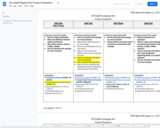
6th Grade Regular English Language Arts: Course Scope & Sequence.
- Subject:
- English Language Arts
- Material Type:
- Full Course
- Provider:
- Liberty Public Schools
- Date Added:
- 07/11/2022

6th Grade Regular English Language Arts: Course Scope & Sequence.
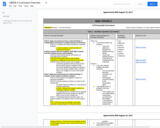
6th Grade Regular Math: Course Scope & Sequence.
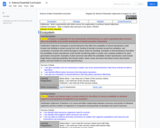
6th Grade Regular Science Scope & Sequence
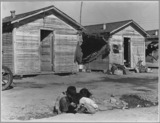
This two-day lesson focuses on the reading and analysis of “The Circuit” by Francisco Jiménez. The goal of this lesson is for students to make inferences about the challenges and changes required of the story’s character, Panchito, and to find evidence of the author’s craft that develops the narrative.Students will reflect upon the relevance of the essential question (In what ways does our need to feel a sense of belonging conflict with our individuality?) to the narrator's experience. In particular, students should recognize that the reality of the narrator's individual situation acts as an impediment to his efforts to belong to a community.Although "The Circuit" is classified as a work of fiction, the author states that the stories represent the lives of his family members. Students will appreciate Jimenez's descriptive, character-driven writing.
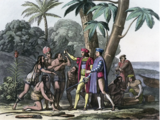
Modificado y traducido de la adaptación de Rebecca Stefoff de La otra historia de los estados unidos escrito por Howard Zinn

Contains teacher cover sheet, blank template, and student example.
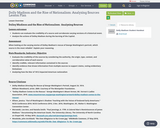
Lesson outcomesStudents can evaluate the credibility of a source and corroborate varying versions of a historical event.Analyze the actions of Dolley Madison during the burning of the Capitol.AssessmentWhen looking at the varying stories of Dolley Madison’s rescue of George Washington’s portrait, which source is the most reliable? Explain your reasoning.State Standards, Indicator, ObjectiveEvaluate the credibility of the sources by considering the authority, the origin, type, context, and corroborative value of each sourceIdentify credible, relevant information contained in the sourcesIdentify evidence that draws information from multiple sources to support claims, noting evidentiary limitationsAnalyzing how the War of 1812 impacted American nationalismSource CitationsEllison, Jessica. “Out of Washington's Shadow: Teaching with the Voices of Enslaved Early Americans.” NCSS Conference 2016. NCSS Conference 2016, 2 Dec. 2016, Washington, DC, Walter E. Washington Convention Center
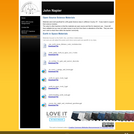
Several power points, quiz, study guide, and worksheets about the Earth, Moon, Sun relationships. I developed these for 6th grade science class as support for other materials. Items are great for visual learners and include concepts of scale, seasons / earth tilt, and path of the sun.

This lesson guides students in an examination of a poet's use of figurative language and word choice to convey themes of belonging and identity. Students will delve into the concept of the unit theme, “Belonging” and the essential question, "In what ways does our need to feel a sense of belonging conflict with our individuality?" Students will write a short essay analyzing the ways in which a poet uses figurative language and word choice to convey the speaker's sense of him/herself as an individual and as someone who feels he/she is not accepted. Image source: "Attain" by Nick Youngson from TheBlueDiamondGallery.com at http://thebluediamondgallery.com/tablet-dictionary/a/attain.html Creative Commons 3 - CC BY-SA 3.0

This two-day lesson focuses on the reading and analysis of “The Circuit” by Francisco Jiménez. The goal of this lesson is for students to make inferences about the challenges and changes required of the story’s character, Panchito, and to find evidence of the author’s craft that develops the narrative.Students will reflect upon the relevance of the essential question (In what ways does our need to feel a sense of belonging conflict with our individuality?) to the narrator's experience. In particular, students should recognize that the reality of the narrator's individual situation acts as an impediment to his efforts to belong to a community.Although "The Circuit" is classified as a work of fiction, the author states that the stories represent the lives of his family members. Students will appreciate Jimenez's descriptive, character-driven writing.

This lesson focuses on the chapter “Chinatown” from Laurence Yep’s memoir, The Lost Garden. Students will consider the factors that contributed to Yep’s struggle to find a sense of belonging with his peers and in his community. Students will determine in what ways the essential question (In what ways does our need to feel a sense of belonging conflict with our individuality?) is relevant to Laurence Yep’s experience as he describes it in “Chinatown”.

In order to assist educators with the implementation of the Common Core, the New York State Education Department provides curricular modules in P-12 English Language Arts and Mathematics that schools and districts can adopt or adapt for local purposes. The full year of Grade 6 Mathematics curriculum is available from the module links
Find the rest of the EngageNY ELA resources at https://archive.org/details/engageny-ela-archive .
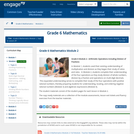
In order to assist educators with the implementation of the Common Core, the New York State Education Department provides curricular modules in P-12 English Language Arts and Mathematics that schools and districts can adopt or adapt for local purposes. The full year of Grade 6 Mathematics curriculum is available from the module links
Find the rest of the EngageNY ELA resources at https://archive.org/details/engageny-ela-archive .
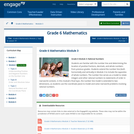
In order to assist educators with the implementation of the Common Core, the New York State Education Department provides curricular modules in P-12 English Language Arts and Mathematics that schools and districts can adopt or adapt for local purposes. The full year of Grade 6 Mathematics curriculum is available from the module links
Find the rest of the EngageNY ELA resources at https://archive.org/details/engageny-ela-archive .
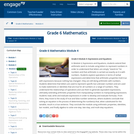
In order to assist educators with the implementation of the Common Core, the New York State Education Department provides curricular modules in P-12 English Language Arts and Mathematics that schools and districts can adopt or adapt for local purposes. The full year of Grade 6 Mathematics curriculum is available from the module links
Find the rest of the EngageNY ELA resources at https://archive.org/details/engageny-ela-archive .
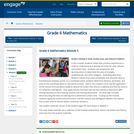
In order to assist educators with the implementation of the Common Core, the New York State Education Department provides curricular modules in P-12 English Language Arts and Mathematics that schools and districts can adopt or adapt for local purposes. The full year of Grade 6 Mathematics curriculum is available from the module links
Find the rest of the EngageNY ELA resources at https://archive.org/details/engageny-ela-archive .
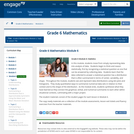
In order to assist educators with the implementation of the Common Core, the New York State Education Department provides curricular modules in P-12 English Language Arts and Mathematics that schools and districts can adopt or adapt for local purposes. The full year of Grade 6 Mathematics curriculum is available from the module links
Find the rest of the EngageNY ELA resources at https://archive.org/details/engageny-ela-archive .

Introduction to Pacific Ocean Island Geography Reading and Assessment
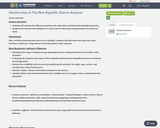
Lesson outcomesStudents will examine the differences between the Federalists and Democratic-Republicans parties.Students will evaluate the credibility of a source and corroborating varying versions of a historical event.AssessmentAfter carefully examining three sources for reliability, students will determine who they trust more - Hamilton or Jefferson, citing relevant text information in their response.State Standards, Indicator, ObjectiveIdentifying the impact President George Washington had on setting precedents for the office of the President.Evaluating the evolution and impact of the Federalist and Democratic-Republican parties on domestic and foreign policy.Evaluate the credibility of the sources by considering the authority, the origin, type, context, and corroborative value of each sourceIdentify credible, relevant information contained in the sourcesIdentify evidence that draws information from multiple sources to support claims, noting evidentiary limitations
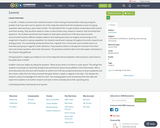
In my PBL I created a scenario that combined research, fiction writing and presentation skills by posing the problem that if you were sent to explore one of the newly discovered Earth-like exoplanets as part of a group expedition what would you report back to Earth. The idea behind this is to get students excited about both science and fiction writing. They would be asked to create a science fiction story, based on research, that chronicled their adventure. The students would have the freedom to write about what forms of life they may encounter, environmental hazards, different weather patterns and anything else they can imagine encountering. As the assignment is based on a group expedition, the students would work in groups throughout the entire research and writing process. The culminating activity would be that a reporter from a local news source would come in an interview each group in regards to their adventure. They would be asked to role play the characters from their story and answer questions about their discoveries. The questions would be taken from their papers and based on the research they gathered.Driving Question: Imagine you landed on one of the newly discovered exoplanets, what would you report back to the public back on Earth?Grabber: Instructor begins by asking the question: “What do you think is out there in outer space?” This will get the students to postulate on what they already know and theorize about the possibilities of the final frontier. After a short discussion the instructor will introduce an article from CNN discussing the discovery of seven exoplanets and then show a video from the history channel that goes further in depth in regards to the topic. This will give the students a base of knowledge from which to start. The exciting graphics and commentary from the video will inspire the students to do further research and start to think creatively about their upcoming storyCulminating Activity: Interview by local reporter.